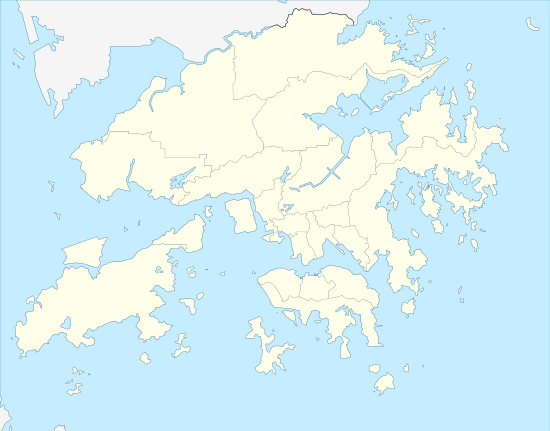Murray Battery
| Murray Battery | |
|---|---|
| Chinese: 美利炮台 | |
| Hong Kong | |
 Murray Battery Location within Hong Kong | |
| Coordinates | 22°16′44″N 114°09′29″E / 22.279°N 114.158°ECoordinates: 22°16′44″N 114°09′29″E / 22.279°N 114.158°E |
| Type | Gun battery |
| Site history | |
| Built | 1841 |
| Built for | War Office |
| In use | 1841-1950 |
Murray Battery (Chinese: 美利炮台) was an artillery battery located on Battery Path, beneath Government Hill in Central, Hong Kong. Named after Sir George Murray,[1] it was built in 1841, shortly after the British took possession of Hong Kong, and served to protect the colonial government's headquarters. It was demolished in the 1950s and replaced with the Former Central Government Offices.
History
During the First Opium War, the British occupied Hong Kong in 1841 and one year later, the territory was ceded to them in the Treaty of Nanking. The new administration chose the site around Battery Path to build its headquarters and defences.[2] The coastal fortification consisted of five coastal artillery positions that overlooked and guarded Victoria Harbour in 1882 (however, due to land reclamation, the site is no longer situated on the coastline). These were removed in the late 19th century, due to the military's relocation and development of artillery batteries in more obscure and outlying areas in Hong Kong Island[3]—namely the Lei Yue Mun Fort built in 1887.[4] Prior to 1856, Murray Battery also marked the limits of the city's street lighting; all roads east of the battery were not illuminated.[5]
However, the site of the battery still existed until the 1950s, when the colonial government decided to redevelop the area in order to build a new headquarters building that would consolidate all government departments in one place. As a result, the battery was demolished and the new (now former) Central Government Offices (CGO) was built in its place, with construction being completed in 1959.[6] The West Wing of the CGO now occupies the site of the battery. Today, a replica cannon located near the CGO pays tribute to Murray's Battery.[7]
See also
References
- ↑ Yanne, Andrew; Heller, Gillis (September 30, 2009). Signs of a Colonial Era. Hong Kong University Press. p. 89. Retrieved February 15, 2013.
- ↑ DeWolf, Christopher (May 3, 2011). "Why Government Hill needs to be conserved". CNN. Retrieved February 15, 2013.
- ↑ Wordie, Jason (May 1, 2002). Streets: Exploring Hong Kong Island. Hong Kong University Press. p. 22. Retrieved February 15, 2013.
- ↑ "Hong Kong Museum of Coastal Defence – About Us – History". Leisure and Cultural Services Department. Government of Hong Kong. Retrieved February 15, 2013.
- ↑ Dennys, Nicholas Belfield; Mayers, William Frederick; King, Charles (1867). The Treaty Ports of China and Japan: A Complete Guide to the Open Ports of Those Countries, Together with Peking, Yedo, Hongkong and Macao. Forming a Guide Book & Vade Mecum for Travellers, Merchants, and Residents in General. Trübner and Company. p. 73. Retrieved March 4, 2013.
- ↑ "Proposal for Heritage Alert Action for the West Wing, Central Government Offices on Government Hill, Hong Kong SAR to the ICOMOS International Scientific Committee on 20th Century Heritage" (PDF). ICOMOS.org. Government Hill Concern Group. June 2012. Retrieved February 15, 2013.
- ↑ "Significance of the Central Government Office" (PDF). Antiquities and Monuments Office. Government of Hong Kong. September 2009. Retrieved February 15, 2013.